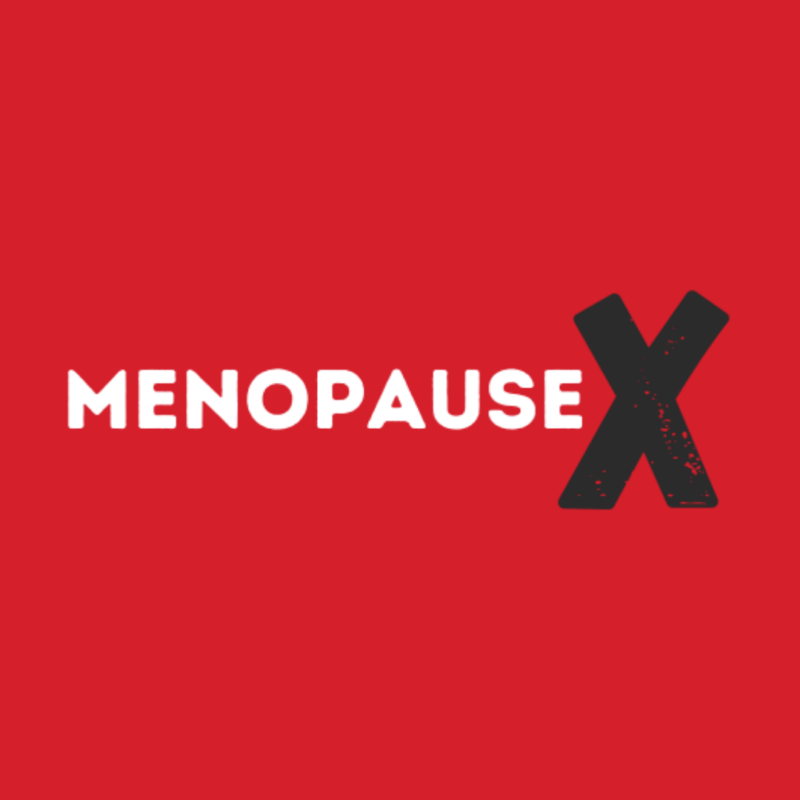World Menopause Day – Dispelling some HRT myths
Published: 17th October 2017

Anxiety, low mood, irritability, loss of self-esteem, loss of confidence, memory problems, poor concentration, tiredness, headaches, palpitations, joint pains, muscle aches, brain fog, urinary symptoms, loss of libido and vaginal dryness are all unspoken symptoms of the perimenopause and menopause. These symptoms often last for years and even decades; yet all too often women are needlessly suffering as they are not receiving the right information, support or treatment.
As a GP with an interest in the menopause, I am constantly shocked, saddened and concerned about the huge number of women who tell me that they are not taking HRT as they are too worried about the risks of taking it. They admit to not knowing much about HRT and they tell me that they thought they could “get through” their menopause on their own. The vast majority of women are suffering with symptoms of the menopause yet the vast minority of women don’t take HRT. Only around 10% of women in the UK who would benefit from HRT take it. For the past decade or so women have been too scared to take HRT and many doctors have been too worried to prescribe HRT.
Thankfully, we now have excellent, evidence based guidelines available in the UK, and also worldwide, to give healthcare professionals the knowledge and confidence to provide women with the best advice, support and treatment regarding the diagnosis and management of the menopause. Too many women in the UK (and worldwide) are suffering because of their menopause; often resulting in them giving up work, leaving their partners and generally having a miserable existence.
So here are some HRT facts:
What is HRT?
All types for hormone replacement therapy (HRT) contain an oestrogen hormone. Taking HRT replaces the oestrogen that your ovaries no longer make after the menopause. Even low levels of HRT can have benefits in your body and improve your symptoms of the menopause.
Many women feel confused about the different types of HRT and also about the benefits and risks of HRT. It is important that your individual health is taken into consideration by your doctor when discussing HRT. HRT is much safer than most people realise.
Some women may choose not to take HRT or others may not be able to take HRT due to an underlying medical condition. If you are not sure whether or not you can take HRT then you should discuss this with your doctor who may decide to refer you to an expert in the menopause.
HRT is the most effective treatment available to relieve symptoms caused by the menopause such as hot flushes, night sweats, mood swings and bladder symptoms. For the vast majority of women under 60 years, the benefits of HRT outweigh the risks. HRT is also recommended for young women to take following an early menopause and they need to take it until they are at least 51 years.
How long can I take HRT for?
There is no set length of time that you should take HRT for. Some women take it for a few years to help improve their symptoms of the menopause. If your symptoms return when you stop taking HRT this is not an effect of taking hormones, this is because you would still be having symptoms of the menopause at that time if you had never taken HRT. Some women decide to take HRT for a much longer period of time. It is usually an individual decision between yourself and your doctor regarding the length of time you will take HRT.
Many women wait until their symptoms are really troublesome or even unbearable before starting HRT. However, taking HRT early really will make a difference to your symptoms (and quality of life) and also lead to a greater improvement in your heart and bone health.
HRT is not a contraception. If you still require contraception, then you should talk to your doctor about the options available to you.
What are the different types of HRT?
HRT is available as tablets, skin patches or gel. The patches are usually changed twice a week and the gel is applied to your skin daily. The tablets are usually taken daily.
If you still have a womb (uterus) it is important that a progestogen is combined with the oestrogen. When you take oestrogen the lining of your womb can build up which can increase your risk of cancer. However, taking progestogen completely reverses this risk.
If you are still having regular periods, then you will be given a type of HRT that still gives you a monthly period (technically a withdrawal bleed). This type of HRT needs to be taken for around a year.
If you have not had a period for one year or if you have taken HRT for one year then it is likely you will be given a type of HRT which does not give you a period. It can be common and completely normal to have some light bleeding or spotting in the first few months of using this type of HRT. However, if you experience heavy or prolonged vaginal bleeding then you need to inform your doctor.
If you have a history of a clot, migraine, diabetes or liver disease then you can still take HRT but it is likely that you will be recommended to use a patch or gel rather than a tablet. This is safer and associated with fewer risks compared to having the tablet form of oestrogen. The progestogen is usually still given as a tablet though.
There are many different preparations of HRT and if one type does not suit you then it is very likely that another type will suit you.
What are the benefits of taking HRT?
There are many benefits of taking HRT. Many women describe that it has given them their lives back and once they have the right balance and strength of HRT then they are delighted!
HRT works really well to improve menopausal symptoms. In addition, it can help to reduce the health risks associated with the menopause.
Your symptoms will improve
Many women find that all their symptoms of the menopause improve within a few months of taking HRT. They often notice that their sleep improves, their mood improves and their concentration recovers. They also often notice that their energy is much greater than it was before they started taking HRT.
HRT usually works to stop hot flushes and night sweats within a few weeks. In addition, HRT will reverse many of the changes around your vagina and vulva usually within 1-3 months. However, it can take up to a year of treatment in some cases.
This means that HRT can improve symptoms of vaginal dryness, improve discomfort during sexual intercourse, help to reduce recurrent urine infections and also improve any increased frequency of passing urine.
You may find that any aches or pains in your joints improve and also that the texture of your hair and skin improve when taking HRT.
Your cardiovascular disease risk will reduce
HRT does not increase your risk of heart disease when it is started if you are under 60 years. In addition, it does not affect your risk of dying from heart disease.
There is some evidence that taking HRT, especially HRT with oestrogen alone, actually reduces your risk of developing cardiovascular disease (meaning heart attacks and strokes) in women. The benefits are greatest in those women who start HRT within ten years of their menopause.
HRT can also lower your cholesterol levels which is beneficial for your heart and body.
Your risk of developing osteoporosis will reduce
Taking HRT can prevent and reverse the bone loss that occurs, even for those women who take low doses of HRT. This means that taking HRT reduces your risk of having a fracture due to osteoporosis. This benefit is maintained during treatment but does reduce when you stop taking HRT. However, there is some evidence that this reduction in risk of fracture persists for a length of time even when you stop taking HRT.
Other possible benefits
Some studies have shown a reduced risk of Alzheimer’s disease and other types of dementia in women who take HRT. However, other studies have not shown this, so more work needs to be done in this area. In addition, some studies have also shown a reduction in risk of bowel cancer in women who take HRT. However, the evidence for this is still not completely clear.
What are the risks of HRT?
Many women are scared or worried about HRT because of the risks of taking it. There has been a huge amount of media attention regarding the risks of taking HRT. This was mainly after the results of a large study about HRT were published over a decade ago. The results of this study were misinterpreted and there is now more evidence available to support the benefits of HRT.
For those women taking the worst type of HRT for more than 15 years, the risk of developing breast cancer is actually greater if they are overweight or do not exercise compared with the risk of taking HRT.
A woman’s actual risk of developing breast cancer depends on many factors (such as your age, family history and general health) so not just whether or not you take HRT. This is why is it very important for your doctor to discuss your individual risks and benefits of taking HRT.
You can greatly reduce your risk of developing heart disease, stroke and many cancers by not smoking and by taking regular exercise and eating a healthy diet. These conditions become more common anyway with advancing age.
What are the facts regarding breast cancer and HRT?
The breast cancer risk is the one that most women worry about with HRT. You may have a small increased risk of breast cancer if you take some types of HRT. However, if you are taking oestrogen only HRT then studies have shown that you actually have a lower risk of breast cancer.
Taking combined (oestrogen and progestogen) HRT may be associated with a small increased risk of developing breast cancer. This risk increases the longer you have used HRT. When you stop taking HRT, you have the same risk of breast cancer as someone who has not taken HRT. The actual risk of breast cancer with taking combined HRT is actually very small. This risk is similar to the risk of breast cancer in women who are obese, those women who have never had children and also those women who drink two to three units of alcohol each day. There has never been a study which has shown there is an increased risk of dying from breast cancer in women who take HRT. This risk varies depending on the type of progestogen you are given with your HRT.
Any increased risk of breast cancer is reversed when you stop taking HRT.
Most of the studies done in this area have not actually shown an increased risk of breast cancer in women who take HRT for five years or less. Women who take combined HRT have an increased risk of having an abnormal mammogram, as HRT can increase the density of your breast tissue. This is not the same as increasing the risk of breast cancer.
Note: There is no increased risk of breast cancer in women who take HRT under the age of 51 years
Clots in the veins (venous thromboembolism) and HRT
This is a blood clot that can cause a deep vein thrombosis (DVT). In some women, this clot may travel to your lung and cause a pulmonary embolism (PE). Together, DVT and PE are known as venous thromboembolism. Women who take combined HRT as tablets have an increased risk of developing a clot. You are more likely to develop a clot if you have other risk factors for a clot. These include being obese, having a clot in the past and being a smoker.
However, this risk of clot is not present in women who use patches or gel rather than tablets of HRT.
Risk of stroke with taking HRT
Some studies have shown that there is a small increased risk of stroke in women taking either oestrogen-only or combined HRT. However, there is no increased risk of stroke in women who use the patch (or gel) rather than tablets. In addition, oral HRT containing lower doses of oestrogen seems to be associated with a lower risk of stroke compared to those containing higher doses. Most women under the age of 60 years actually have a very low risk of stroke.
What are the side effects of taking HRT?
Side-effects with HRT are more likely to occur when you first start taking HRT and then they usually settle with time. The most common side effects you may experience in the first few weeks of taking HRT are a feeling of sickness (nausea), some breast discomfort or leg cramps. These tend to go within a few months if you continue to take HRT.
Some women find that certain makes of HRT skin patches cause irritation of their skin. A change to a different brand or type of HRT may help if side-effects occur. Various oestrogens and progestogens are used in the different brands. If you have a side-effect with one brand, it may not occur with a different one. Changing the delivery method of HRT (for example, from a tablet to a patch) may also really help if you develop any side-effects.
If you are considering taking HRT then the lowest effective dose of HRT should be taken. You should have regular follow-up to decide whether you still need HRT. If you are still experiencing menopausal symptoms on HRT then your dose of HRT will probably be increased.
What is testosterone?
Testosterone is another one of the sex hormones that you produce. Many people think of it as the “male” hormone, which is correct, but women need to have testosterone too. In fact, women produce three times as much testosterone than oestrogen before the menopause! Testosterone is made in your ovaries and also your adrenal glands, which are small glands near your kidneys. Many women have low levels of testosterone as they go through the menopause.
Testosterone can be beneficial at improving your mood, energy, concentration and also sex drive (or libido). Low levels in your body are usually diagnosed by a blood test. Testosterone is usually given as a gel on your skin or sometimes an implant. The dose of testosterone is very low so it will not cause facial hair growth. Testosterone is usually given by a doctor who specialises in the menopause.
The most important advice regarding your menopause is to receive sound medical advice based on the guidelines. Do not suffer in silence!





